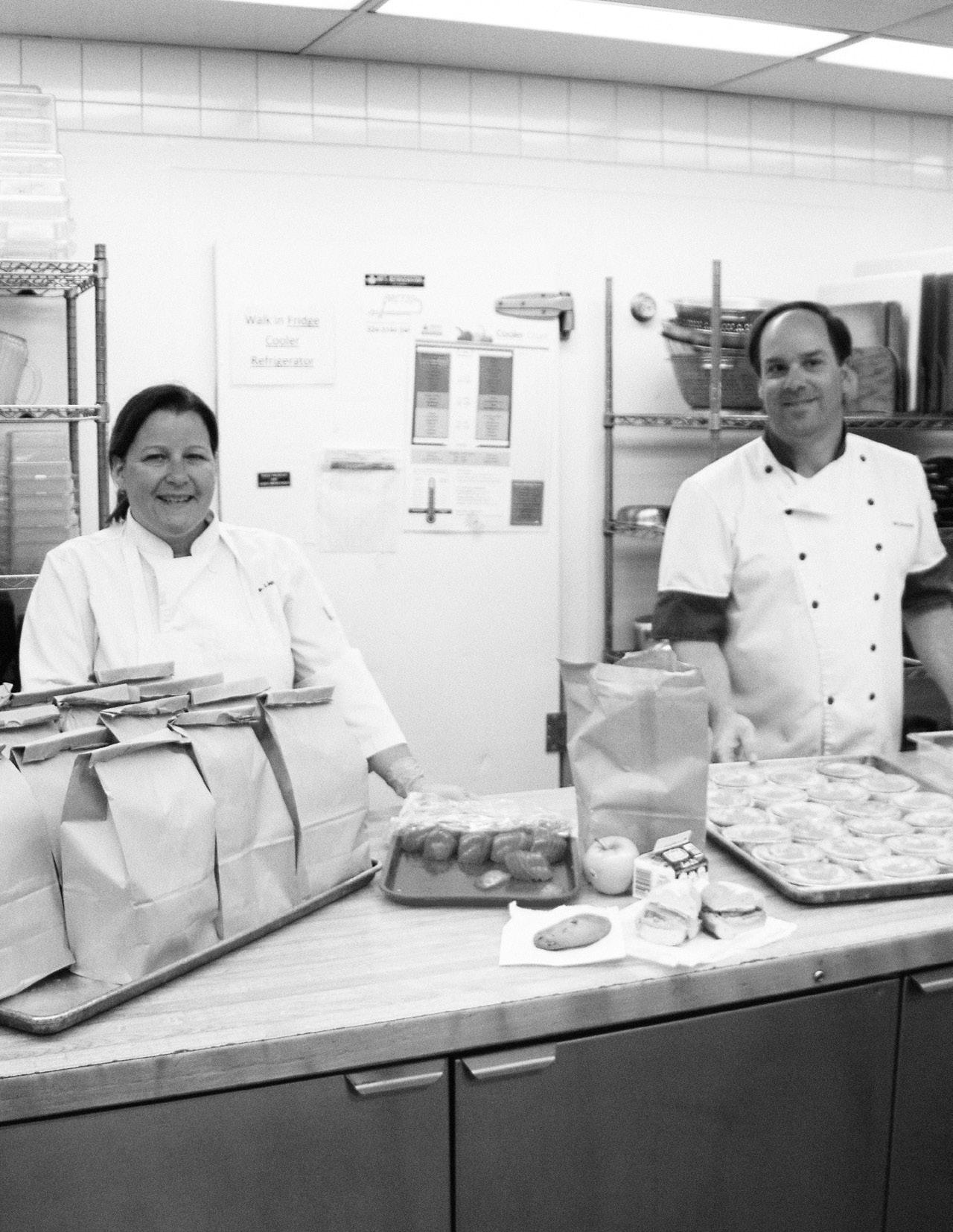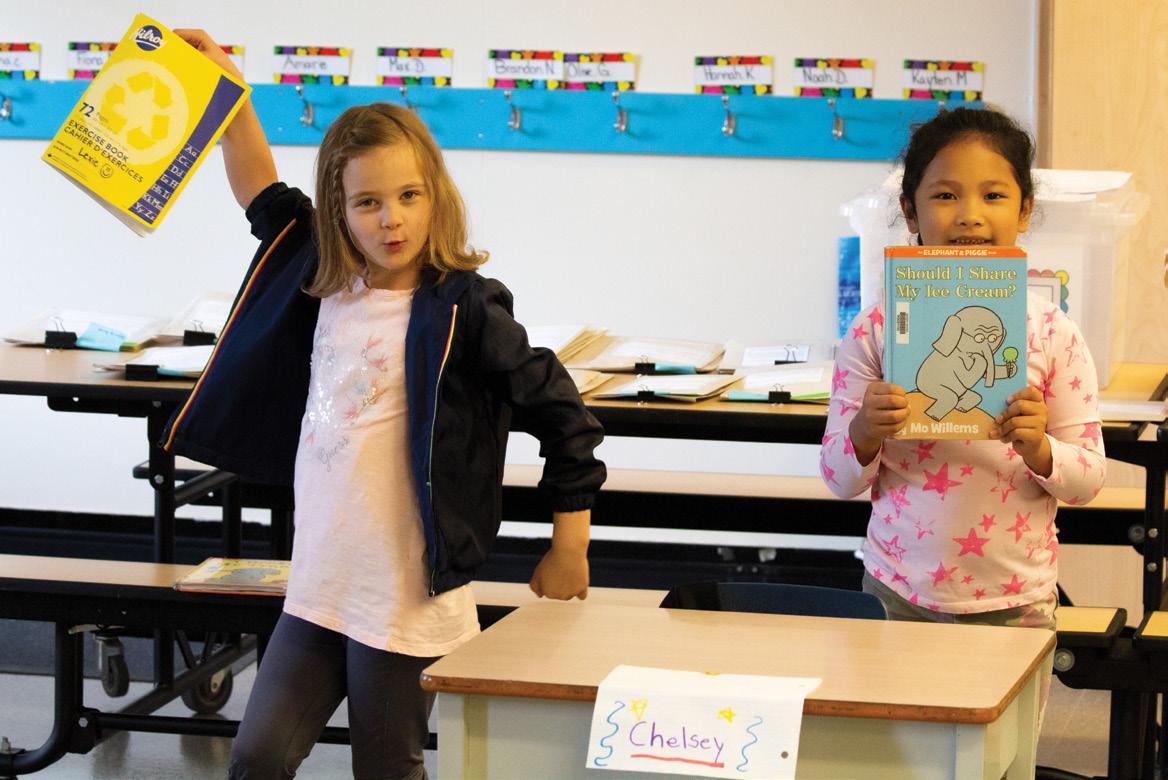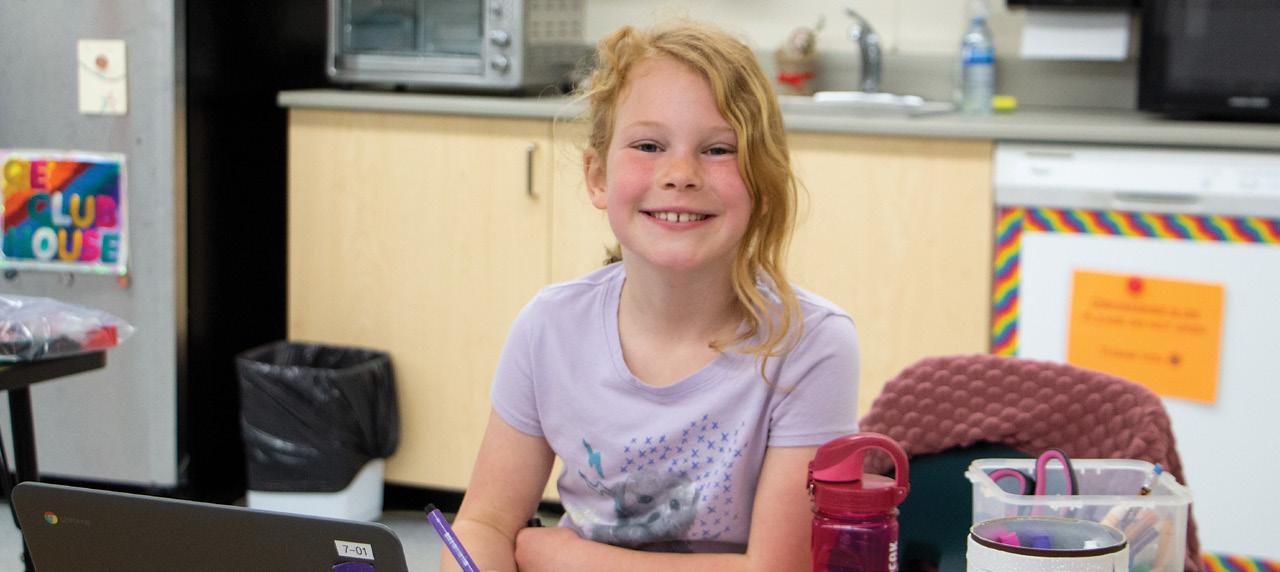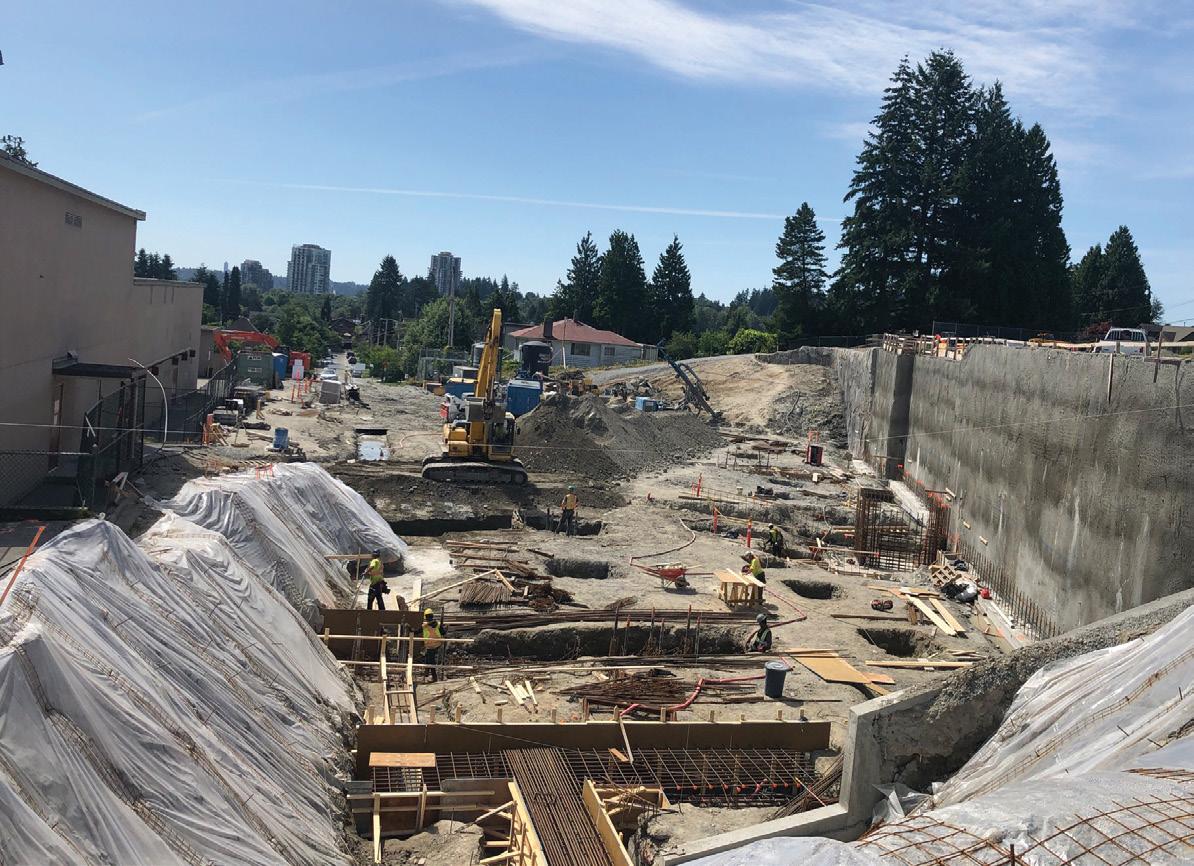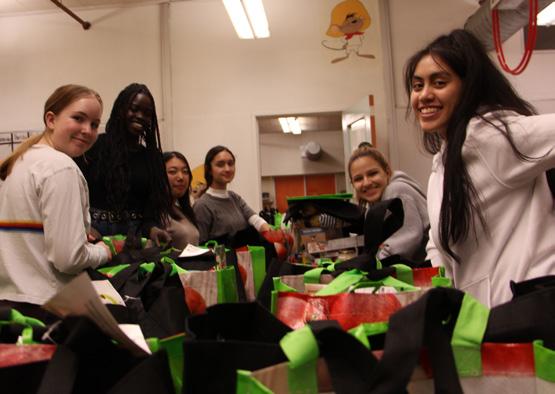
5 minute read
Lead into our future
We will put innovation, learning along with students, and being open and adaptive at the core of how we operate.

Advertisement
Above Left:
3D printers ready to make face shields parts that will protect frontline workers through the COVID crisis.
Above Right:
Our Game of Apps participants take a minute away from innovating and learning to take a picture.
How did we do that this year?
§ When a crisis broke out, a small handful of teachers took it upon themselves to make a difference and support frontline workers.
They coordinated across the district to borrow and centralize the 3D printers from our schools, and set to work making parts for face shields that were sent to local hospitals and other needed locations.
In collaboration with Tinkerine (the local company who makes the printers and called out for support), the teachers worked through days and weekends to help produce parts for over 10,000 masks!
As part of our commitment to sustainability – as a core tenant of leading into the future – we phased in paperless report cards at every school. As we move forward, the MyEdBC Family Portal will become a tool that will continue to connect parents to their kids’ education.
Our students are also leading the way when it comes to channeling innovation and technology. This year three New Westminster teams competed in the Game of Apps – with team EcoWorld taking home the top spot at Provincials, having created an app that was designed to help make fighting climate change a little easier. But when it comes to telling the story of leading into our future, there was one example that spoke to what is truly possible when people work together…
Remote learning in a covid world
COVID-19: it is perhaps “the story of the year” in many ways. It is the event none of us predicted, and also the singular factor that touched and changed the lives of every single student and staff person in our district.
The whole community showed its strength by pulling together and working hard to achieve something we might have previously questioned the possibility of: a shift to remote learning. We leaned into technology as a solution that could keep our classrooms together, while keeping apart. What most didn’t see was the amount of work done to get to the place were we could even start broadcasting into the homes of our district’s families. Right away we knew equitable access would be an issue. We launched surveys to assess need and engaged Principals and Vice-Principals at every school to reach out to the families who couldn’t receive or read the emailed survey. In the end we loaned out almost 1,000 Chromebooks to help facilitate access for students and we worked with telecom providers to set up internet service to families without.
When it came to equipping our staff, our Technology and Information Services team quickly researched options and landed on two options teachers could select from: Google Classrooms and Microsoft Teams. There was much training to do, systems to upgrade, passwords for thousands to set and more to be done. Every teacher, education assistant and other employee had to learn new systems and figure out how to do their job from home.
Not only were the systems new, but so were the teaching strategies.
The staff portal on our website filled with guides, tools, training opportunities and lists of weekly resources that were created and populated by school board staff, the District’s facilitators and other teachers. Then off to teachers, education assistants and other educators … where new lessons were developed, contact made with each student, and new plans were enacted to continue to deliver learning opportunities for students who were now stuck at home.
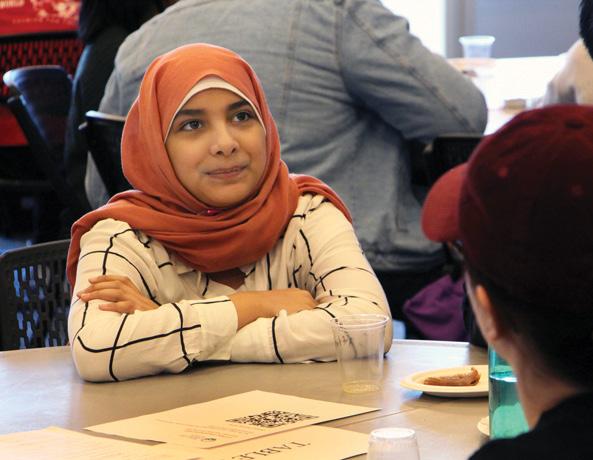
Above: A participant at this year’s Student Symposium shares her story to help build a better future for others.
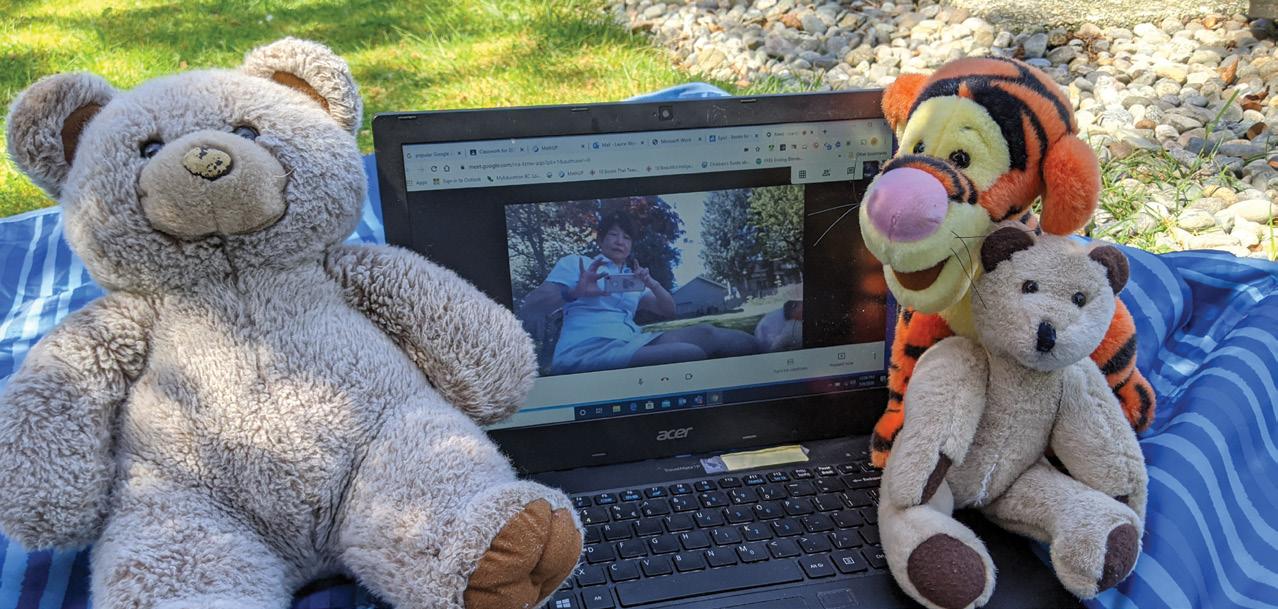
What was the result?
One teacher turned his basement into a TV studio style science lab to deliver demonstrations that would help his students learn. Another hosted a virtual teddy bear picnic for her class. Some teachers worked with their classes to make videos showcasing their community spirit and others reproduced great works of art by posing Lego figurines and stuffed animals for photos. Staff pushed their comfort zones and made collaborative school-wide videos to help connect with students at home. Teacherlibrarians fleshed out websites to increase access to digital catalogues. And Educational Assistants used technology to deliver one-on-one support in new and meaningful ways. Even Board and Parent Advisory Council meetings were delivered through digital forward platforms. And thousands upon thousands of students and parents turned bedrooms and kitchens into modified classrooms – each doing their best to take advantage of the continued learning opportunities being sent their way. And while managing complicated lives that changed family to family, everyone came together to support our District’s learners … doing the best we each could given the restrictions. It was far from a perfect process … with updates sometimes feeling like they posed as many questions as they provided answers. But with patience, kindness and a lot of effort, on the whole, it came together. (And thanks to the amazing participation in various surveys and our ThoughtExchange by parents, staff and students, we’re ready and committed to making changes to improve the process in September.) Throughout the challenges this Spring presented us, our students kept learning, focussed on the basics of numeracy and literacy, with additional opportunities to showcase their creativity and collaboration. Our staff doubled down on safety, disinfection and new protocols to keep everybody healthy through each of the phased shifts in the return to in-class instruction. We strengthened relationships between families and their schools; and we worked together as a community to keep everyone as safe as we possibly could. We were all involved, and we made it somehow work in the face of so much uncertainty … we made it work because we did it together.
Opposite: A virtual teddy bear picnic connected teachers and students who were learning apart.
Pictured: The summer Rec and Read program made sure our youngest learners could build their literacy skills.
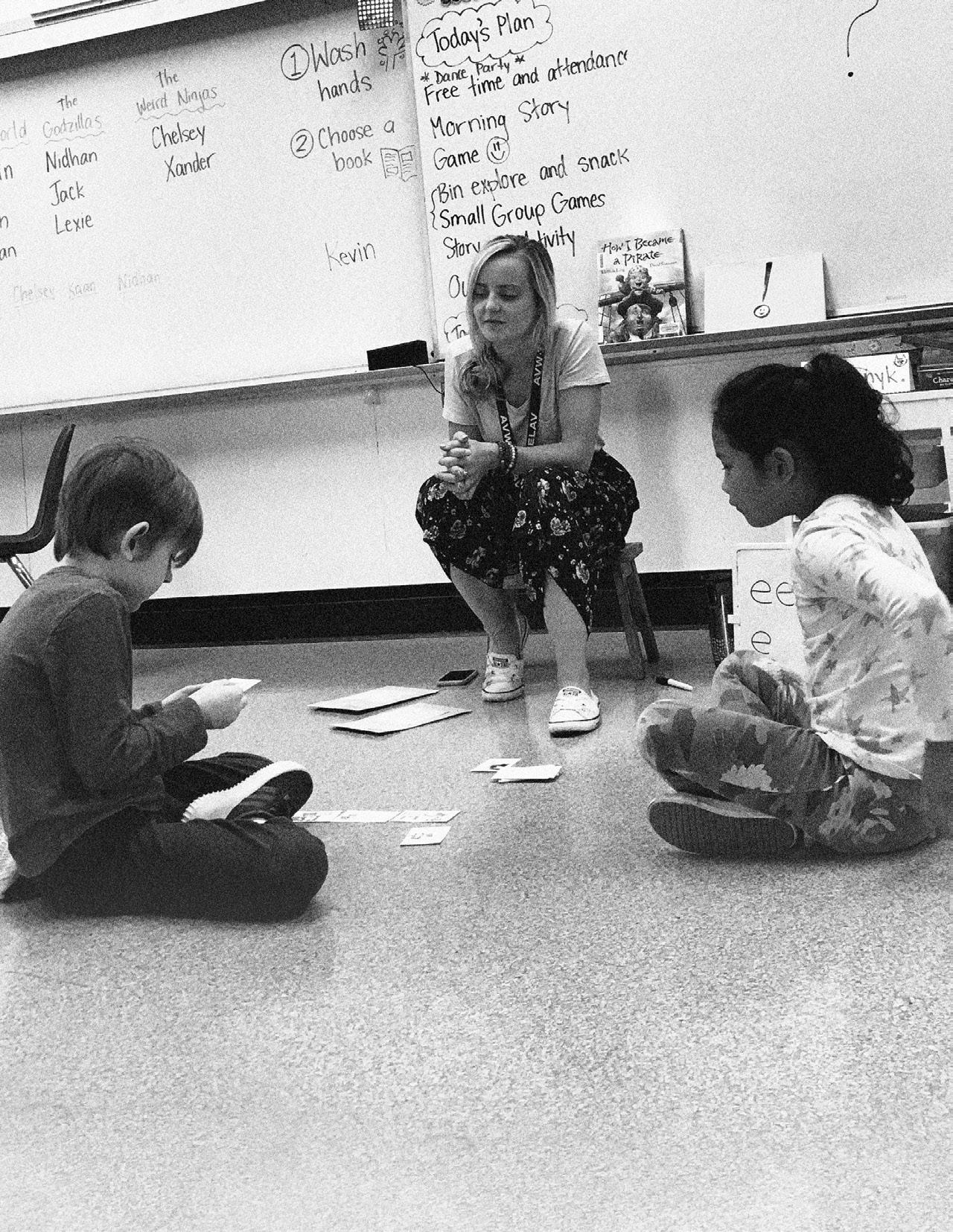
GOOD THINGS ARE HAPPENING: NEW WESTMINSTER SCHOOLS 2019-20 Pictured: Cafeteria staff at NWSS showcase the meals they stepped in to provide daily, in the midst of a pandemic, for kids whose families counted our supported lunch programs.
